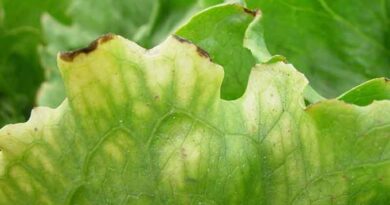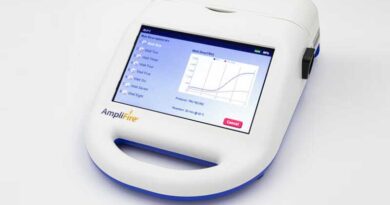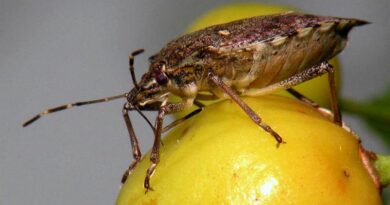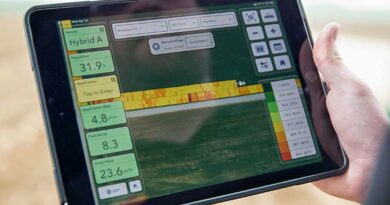Agdia Releases StudFinder™, a Molecular Test for Sex Determination in Cannabis
18 April 2024, Indiana: Agdia, a market leader in plant diagnostic products and services, is happy to announce the release of StudFinder™, a molecular diagnostic test for sex determination in Cannabis.
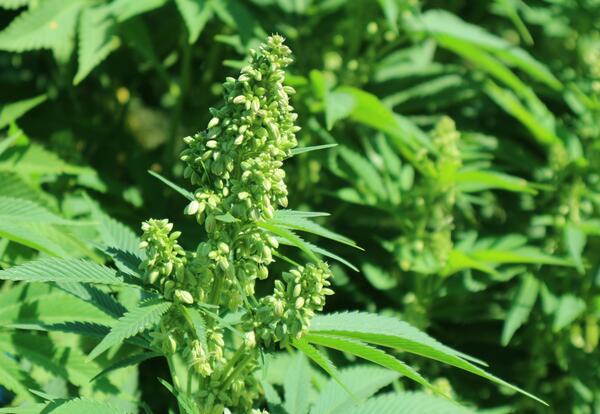
Cannabis is a genus of wind-pollinated annual flowering plants, which has been used for fiber, food, oil and medicinal purposes for millennia. The genus Cannabis is indigenous to central and eastern Asia but is now cultivated worldwide. Three species are commonly recognized: C. sativa, C. indica and C. ruderalis. However, there is dispute as to whether all three are actually subspecies of C. sativa. All species of Cannabis typically produce imperfect flowers and are dioecious. This means flowers have either male reproductive organs produced in panicles or female reproductive organs produced in racemes (buds) on separate plants (Figures 1. and 2.). Consequently, plants can be referred to as being male or female.

A significant portion of commercial cannabis production utilizes vegetative or asexual propagation. This methodology cultivates tissue cuttings (clones) taken from female mother plants with recognized phenotypes (Figure 3). This is accomplished on a commercial scale and ensures consistency of the female phenotype and desired traits throughout plant inventories. Nevertheless, every plant variety begins as a seed and carries the potential phenotype of either female or male progenitors; the female to male ratio of traditional cannabis plants is approximately 65:35. Cannabis breeders and small-scale producers rely heavily on seeds as their sources of genetic material. Moreover, mother plants can be infected with systemic pathogens such as Hop latent viroid, forcing commercial producers to dispose of inventories and restore propagative stocks from seeds. Ultimately, seeds function as reservoirs of curated plant lineages and can be stored indefinitely when not in cultivation.
The cannabis plant produces more than 100 terpenophenolic compounds known as cannabinoids, including the psychoactive compound tetrahydrocannabinol (THC). Cannabinoids are produced primarily within glandular trichomes, which are minute secretory hairs on flowers and leaves (Figure 4.). And while both female and male cannabis plants have trichomes, the female plants produce much higher concentrations, percentage of dry weight, of cannabinoids relative to male plants. High percentages of THC in dried cannabis flower products are paramount to burgeoning therapeutic and recreational markets. This makes female plants indispensable for the optimization of THC production and most desirable during the selection of new cultivars, whereas male plants are removed from inventories upon identification.

Visual identification of male cannabis plants is not typically accurate until six to eight weeks post germination. During this time, valuable labor, resources and canopy space are expended and thereby wasted on male plants destined to be rogued. Therefore, early and accurate identification of male plants is essential to the productivity and profitability of the cannabis production industry.
Agdia’s new cannabis sex identification test, StudFinder™, targets the Y chromosome DNA in cannabis and can identify male plants as early as the cotyledon stage or five to seven days post germination. StudFinder™ utilizes isothermal amplification technology and is the newest addition to Agdia’s rapid and portable AmplifyRP® XRT product line. AmplifyRP® technology promotes the rapid amplification and detection of nucleic acid targets, DNA or RNA, while maintaining a single operating temperature. Moreover, this technology achieves target sensitivity and specificity comparable to qPCR while having clear advantages over detection platforms constrained to laboratory environments.

StudFinder™ protocol is straightforward and does not require a nucleic acid purification step. Plant tissue samples are incubated in extraction buffer, and crude liquid extracts are tested directly. Thereafter, the qualitative test result is displayed within 20 minutes. When paired with Agdia’s AmpliFire® isothermal fluorometer, StudFinder™ is a user-friendly tool that can be implemented in the field or the lab by personnel with limited experience in molecular diagnostics (Figure 5.). This product’s high-level of performance and utilitarian adaptability change the game for cannabis growers wanting to optimize productivity and profitability.
Agdia states its StudFinder™ assay was validated against a broad panel of cannabis cultivars and achieved a diagnostic sensitivity of greater than 95%. This assay was developed to be used with cotyledon and true leaf tissue matrices. Please visit the StudFinder™ webpage to access the full product user guide and validation report.

Agdia’s StudFinder™ assay is the newest addition to the AmplifyRP® XRT product line, which now includes 27 products. In addition to StudFinder™, Agdia offers AmplifyRP® XRT products for detection of Beet curly top virus, Botrytis cinerea, Fusarium oxysporum, Lettuce chlorosis virus, Hop latent viroid and Hop stunt viroid, for a total of six of the most widespread and emerging pathogens affecting the cannabis industry. For more information on Agdia’s complete line of AmplifyRP® XRT assays, please visit Agdia’s website www.agdia.com.
Also Read: ICAR Entrance 2024: Online applications invited for ICAR PG and Doctoral Entrance Exam 2024
(For Latest Agriculture News & Updates, follow Krishak Jagat on Google News)


